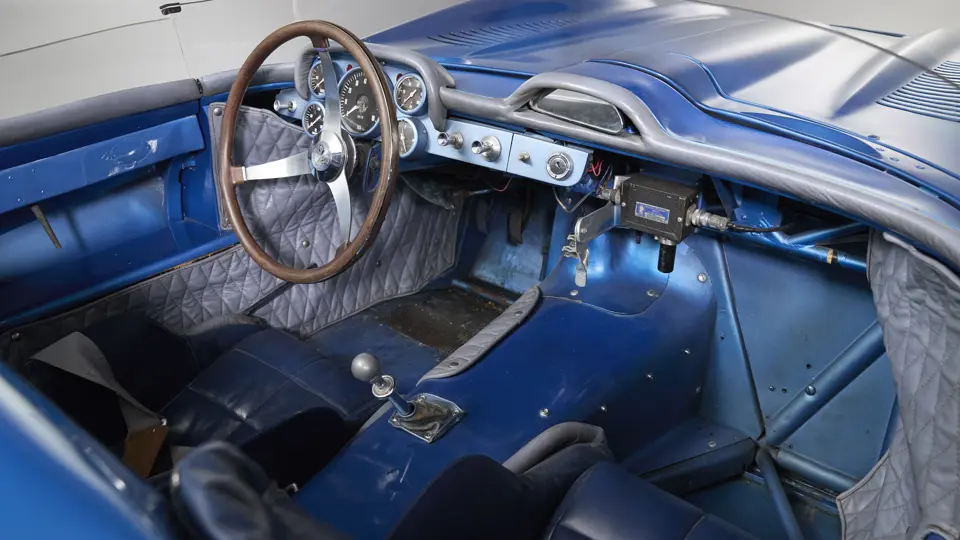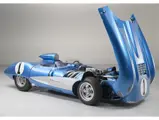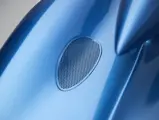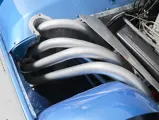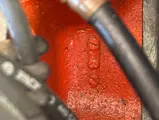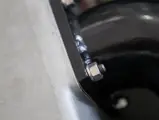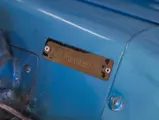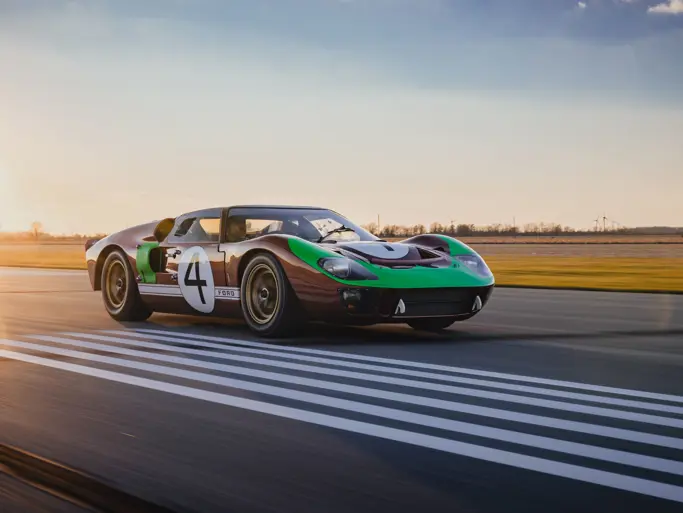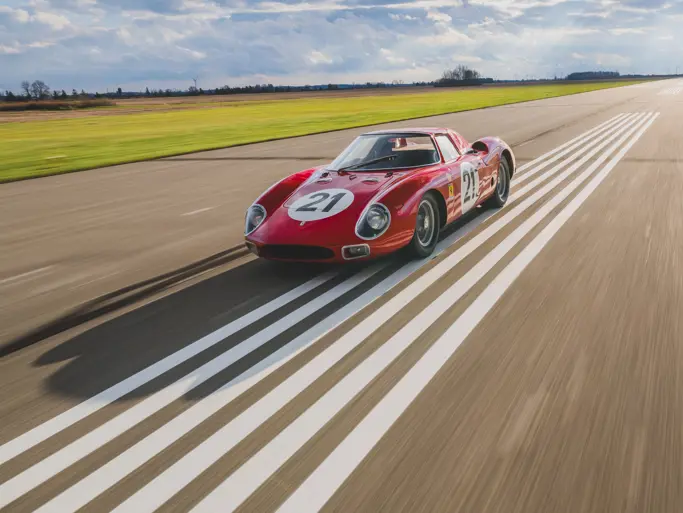At the exciting Le Mans start, Fitch began the race along with the lead pack and would hold 6th place for a number of laps. The speed of the SS was on full display, with the car gapping Jaguar D-Types on Sebring’s long straightaway. It being the car’s first race, however, there were issues. The experimental brake system was touchy and prone to locking up; this proved a problem in practice and the race, leading to flat-spotting the tires. Fitch limped the car to the pits with the engine having died on him. A faulty coil connection was determined to be the problem, and following a 15-minute pit stop, the car was sent out again, with Fitch later forced to swap the coil on the circuit.
Things would never fully settle in for the SS. Further problems arose, with the rear suspension chattering and the tires beginning to hit the fenders going over bumps. Not wanting to risk driver safety or damage to the car, Duntov ordered the SS in. Piero Taruffi returned the car to the pits, and the SS retired after 23 laps. The race was eventually won by Juan Manuel Fangio and Jean Behra in a factory Maserati entry 450S, with Stirling Moss and Harry Schell taking 2nd in a factory Maserati 300S, and Mike Hawthorn and Ivor Bueb finishing 3rd in a D-Type for Jaguar Cars North America. For Chevrolet, a positive takeaway from Sebring was a pair of Corvette C1s finishing 1-2 in the GT5.0 class.
Following a post-retirement inspection, it was determined that a bushing had failed in the rear suspension, apparently due to incorrect installation. Yet even without the suspension bushing failure or brake issues, the car would have likely been forced to retire early due to an excessively warm cockpit and the drivers’ inability to handle the heat. The Corvette SS’s lightweight magnesium body, while great in theory, proved troublesome, as it conducted heat straight to the cockpit. To combat this, mechanics cut away lower body panels near the exhaust in an effort to dissipate the radiating heat, but this, along with the addition of cockpit insulation, could not bring temperatures back to comfortable levels.
Chevrolet Motor Division’s Ed Cole had this to say following the race: “We are quite pleased with the performances of the Corvette SS. The run at Sebring gave us an opportunity to observe, under severe operating conditions, several components we were interested in testing. It proved a design of great promise. When some elements showed signs of deterioration, faster than we thought they should, we felt it best to stop and observe these components rather than continue to point of failure which would complicate further study.”
Despite these issues, the SS still impressed, leading many to ask what was next for Chevrolet’s new racecar. Between The Mule and the SS in practice and in the race, Sebring proved Chevrolet’s new racecar was a real American contender—a car that could potentially challenge European supremacy in sports car racing.
A FORCED RETIREMENT
Following the race on 28 March 1957, a memo circulated within the Chevrolet Engineering department from Dean Bedford Jr. summarizing the SS Corvette’s race at Sebring. The memo outlined what went well, what did not, and what needed to be addressed going into the next race. It is rumored that the magnesium body experiment had run its course and that fiberglass construction would be utilized going forward for the SS. Less than one week later, on 3 April 1957, the Chevrolet Engineering Department received design order 17890, outlining the design and development work needed to be completed on the Corvette SS. The work order specified: “This redesign work is to include such items as brakes, exhaust systems, ventilation of cockpit, engine cooling, and any other design as directed.” It outlined a delivery date of 3 June 1957, three weeks ahead of the world’s ultimate endurance race, the 24 Hours of Le Mans.
Then, on 6 June 1957, racing fans and the auto industry alike were hit with shocking news. The Automobile Manufacturers Association (AMA), made up of all the American auto manufacturers, agreed to end factory-supported racing efforts. This decision effectively ended Chevrolet’s Project XP-64 program and any further development or racing of the Corvette SS. Despite only competing in one race, the Corvette SS proved a stunning design exercise and a racecar with great promise, leaving everyone with the burning question…what if?
It is said that Chevrolet, prior to Sebring, had applied for and was granted three entries to Le Mans for 1957. The Corvette SS likely would have filled one of those spots. Following the proposed developmental updates, could the SS have foiled what ended up being Jaguar’s third consecutive win with the D-Type?
The fate of the second Corvette SS chassis, which underpinned The Mule development car, only fuels speculation about the project’s unrealized potential. The chassis was eventually acquired by GM designer Bill Mitchell and used as the basis of his Project XP-87 Stingray Racer. In addition to presaging the styling of the C2 Corvette, this car was raced, albeit without any official Chevrolet support or Corvette badging, by Dr. Dick “The Flying Dentist” Thompson to an SCCA National Championship victory in 1960.
By the end of 1957, Arkus-Duntov was rewarded with his efforts on the Corvette program and promoted to Chevrolet’s Director of High Performance. While unable to achieve Le Mans success with his Corvette SS, he continued to support racing efforts behind the scenes. He aided Briggs Cunningham’s Corvette effort in 1960, a year in which John Fitch and Bob Grossman achieved a class win for Corvette at the 24 Hours of Le Mans, finishing 8th overall.
With the SS project officially shut down, the car remained in the ownership of General Motors and was occasionally used for promotional purposes. It was shown at the 1957 Michigan State Fair from 30 August to 8 September. In this period, the SS was featured in numerous publications, including serving as a cover car for Sports Cars Illustrated and Motor Guide magazines. Road & Track would feature the car, and the Chevrolet team, in their event coverage of the 1957 Sebring 12 Hour race. In 1959 Arkus-Duntov would drive the SS at the Daytona International Speedway, lapping the track at 155 mph, an impressive feat. Arkus-Duntov would later return with the SS to GM’s Mesa Proving Ground, achieving a top speed of 183 mph and proving just how potent the SS was.
On 29 November 1960, Zora Arkus-Duntov contacted Anton "Tony" Hulman Jr. to see if he was interested in the 1957 Chevrolet Corvette SS for display at the Indianapolis Motor Speedway Museum. Hulman replied, honored and interested in Arkus-Duntov’s offer, yet for unknown reasons, the discussions did not proceed further. The SS, still under GM ownership, was later shown on 13 March 1962 at Hallman’s Chevrolet at the Western New York Corvette Club Meeting alongside the newest Chevrolet models.
On 1 November 1966, Arkus-Duntov once again reached out to Hulman, this time encouraging him to contact the new Chief Engineer, A.C. Mair, as he was now open to the donation. It is rumored that Arkus-Duntov played a cat-and-mouse game with GM accountants for years with the SS, moving it around to various GM buildings to keep it “off the books” and out of the prying eye of accountants—and most importantly, avoiding the crusher, a sad fate of most prototypes of the era. Hulman quickly followed Arkus-Duntov’s instructions and reached out to Mair, and the car made its way to Indianapolis in late May. It was officially presented to Tony Hulman Jr. by Zora Arkus-Duntov on 29 May 1967, at the Indianapolis 500 Driver’s Meeting during race week.
Since joining the Indianapolis Motor Speedway Museum, the SS has been displayed proudly alongside other highly significant racing machines. In 1984, the SS appeared in the very first Bloomington Gold “Special Collection,” returning the following year in 1985. In the mid-1980s, work was completed on the SS including an exterior refinish, interior retrimming, a new Lexan windshield, and a refinish of the wheels. All work was completed in time for the Chevrolet Corvette SS to travel to Monterey in August 1987, in celebration of Chevrolet’s 75th anniversary. There, it was reunited with Zora Arkus-Duntov and John Fitch at the Monterey Historic races, where the two did a parade lap around Laguna Seca in the SS with John Fitch driving. While Zora Arkus-Duntov was not permitted to drive the car at Monterey, a detour was made on its way back East, stopping at GM’s Milford Proving Grounds, where he was once again behind the wheel of his legendary SS. Arkus-Duntov’s “one or two laps” behind the wheel turned into many, reportedly lapping the track at very high speed. This experience behind the wheel must have brought back memories of all that went into developing his special purpose-built racecar.
In 1990, the SS served as the cover car for the fall issue of The Corvette Restorer magazine. In June of 1994, the Corvette SS was once again selected for the Bloomington Gold Special Collection. Later, in September 1994, the SS was present for the grand opening of the National Corvette Museum in Bowling Green, Kentucky. In June 1997 the SS was shown at the Bloomington Gold event in Springfield, Illinois.
In August 2002, the SS would once again grace the Monterey Historics, shown by GM in celebration of the Corvette, and served as one of the poster cars of the event. Later that month the IMS Museum went through the process of titling the car, doing so with a state-assigned VIN, MVIN215923IND, affixed to the firewall. The SS was part of the 50th Anniversary celebration of the Corvette, held in 2003 in Nashville, Tennessee. In 2006, the SS was put on loan to the Saratoga Auto Museum, joining a number of other cars for their John Fitch: An American Racing Hero display. In 2010, the SS was inducted into The Bloomington Gold Great Hall, recognizing the 50 people and 50 Corvettes that influenced the model. Then, in 2012, the SS was shown at the 17th annual Amelia Island Concours d’Elegance.
In May 2014, the Rochester fuel-injection unit was rebuilt by Corvette Restoration Services in Farmington, Michigan, in preparation for the SS to be used at the 2014 SVRA Brickyard Vintage Racing Invitational. The SS completed parade laps around the Speedway, during which time the car, unfortunately, suffered an engine failure, with two connecting rods breaking due to oil starvation. Upon disassembly of the engine, it was determined that it was beyond repair for future use. Through the teardown process it was also discovered not to be the original engine, but one from the 1959 model year. According to Museum notes a “new old stock 1957 engine” was acquired, built, and installed in the SS, returning it to operability.
In 2016 the SS made a return to the place it once raced, Sebring, where it was displayed in the Gallery of Legends, beginning during the 64th running of the 12 Hours of Sebring. Starting circa 2018, the car began a period of long-term display at the National Corvette Museum in Bowling Green, Kentucky, though it has been shown elsewhere on special occasions. In the summer of 2018, the SS was exhibited at the Revs Museum in Naples, Florida, as part of their “Duntov’s Stealth Fighters” display. It was returned to the IMS Museum from 2020–2021 for a special “From the Vault” exhibition. In 2022 the SS joined 11 of the most influential Corvette concept cars at the Lime Rock Park Historic Festival to celebrate the Chevrolet Corvette’s 70th anniversary; it marked the first time the 12 cars were ever together. Returning to Connecticut the following year, the SS participated in the 2023 Lime Rock Historics, and it was also displayed at the Monterey Historics that August.
The Indianapolis Motor Speedway Museum proved a worthy recipient of the SS, and its donation was a fitting full-circle moment for Arkus-Duntov. The car he cherished most was, in the end, housed on the hallowed grounds of an event Arkus-Duntov had himself attempted to qualify for on two occasions in the late 1940s. Moreover, the Corvette is a celebrated model at the Brickyard, having served as the pace car for the Indianapolis 500, an impressive 21 times to date—more than any other model—with special editions available for public purchase.
A SINGULAR AND SPECTACULAR MACHINE
Zora Arkus-Duntov had one of the most storied careers in automotive history. By 1967, he had achieved the title of Corvette Chief Engineer, a truly coveted position. He retired from the company in 1975, carrying on as an ambassador of the Corvette for the rest of his life. His name today remains synonymous with the model he helped cement as America’s sports car.






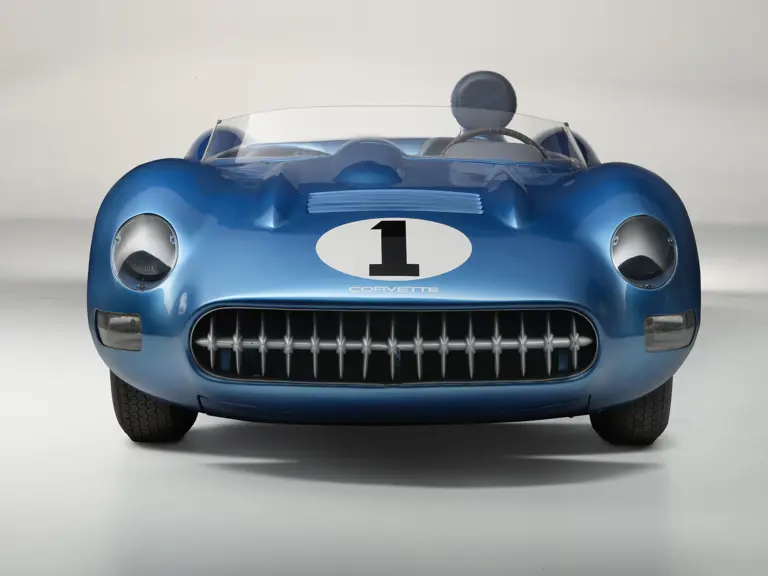
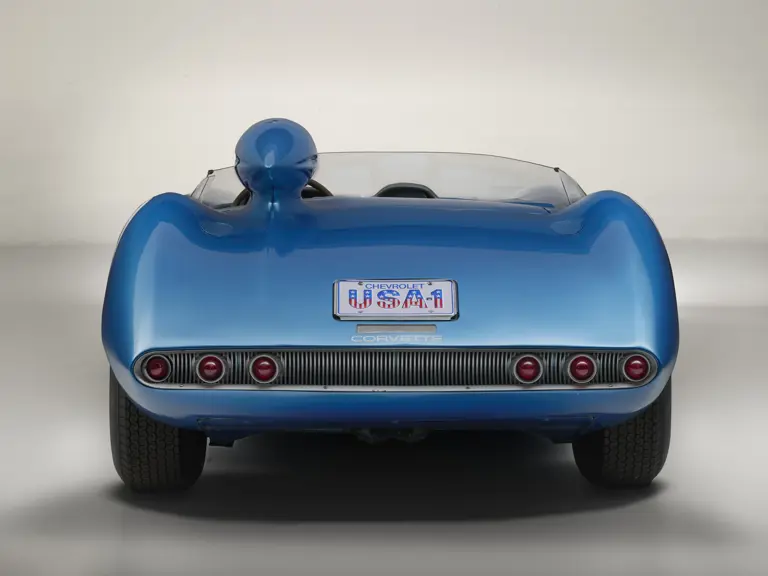



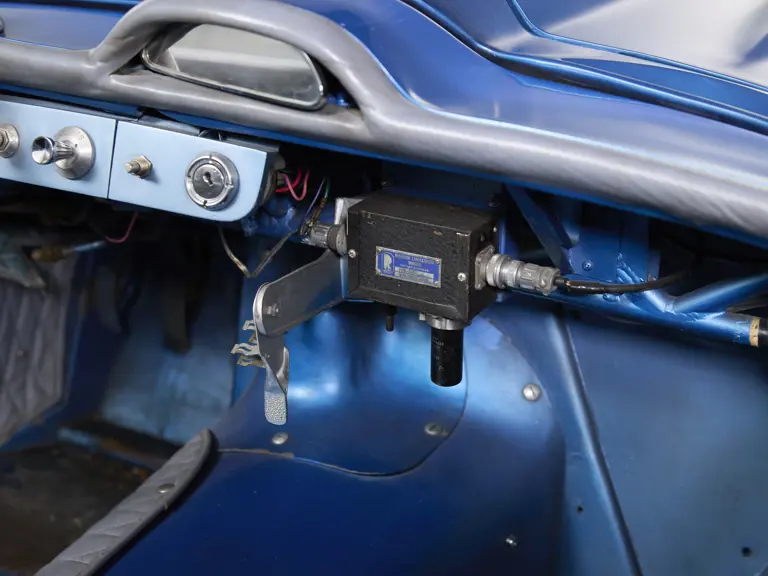





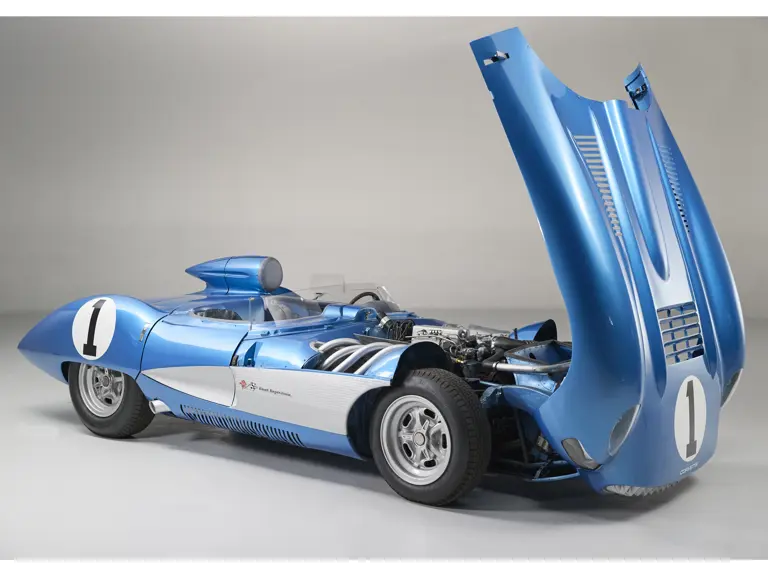
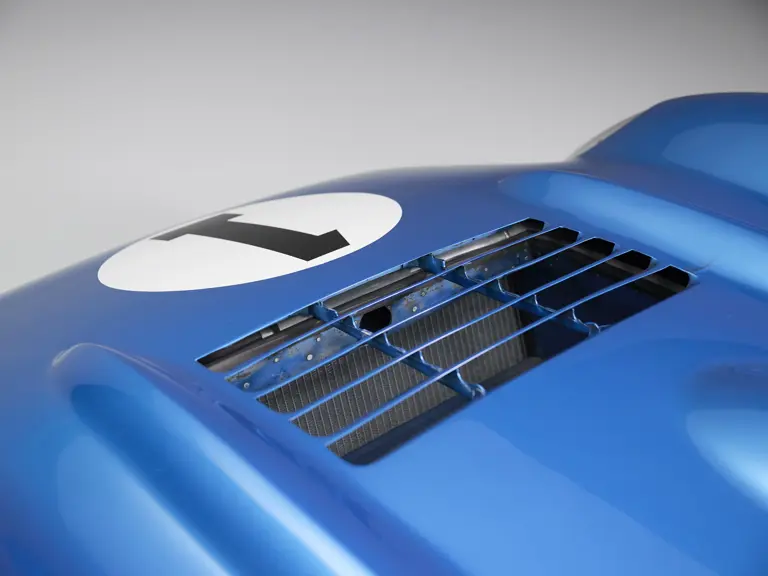









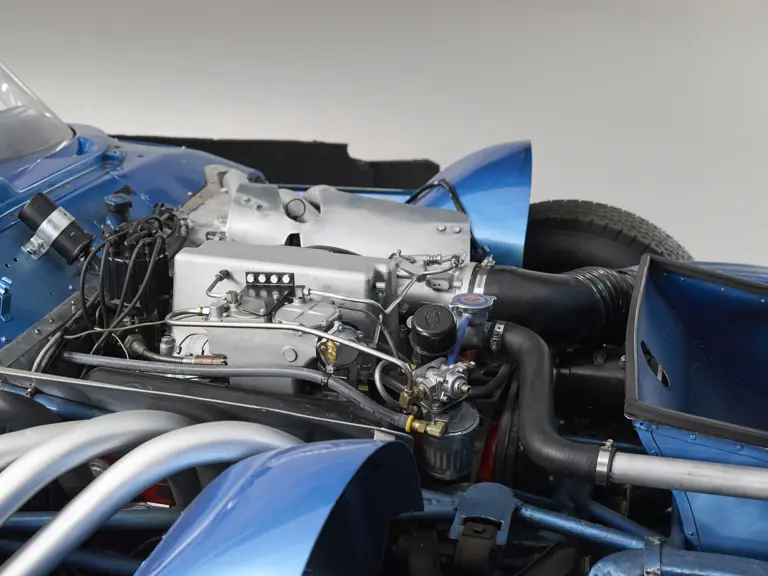








 | Coral Gables, Florida
| Coral Gables, Florida





